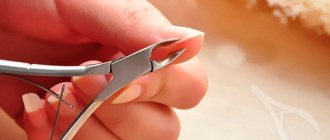Although both types of wen are benign neoplasms, unlike atheroma, lipoma can sometimes undergo malignancy, degenerating into liposarcoma. Atheroma is formed as a result of blockage of the sebaceous glands, and a lipoma forms in the subcutaneous fatty tissue, often growing in depth - between the muscles and blood vessels, down to the bones and joints. Lipomas are most often painless, and with large tumors, discomfort may be caused by the pressure of the tumor on neighboring tissues. Atheroma, in the case of inflammation and suppuration, can be painful when pressed. There can be no talk of any independent removal of such tumors. Diagnosis and treatment of any neoplasms should be carried out by qualified specialists in a specialized clinic.
Small lipomas can resolve on their own under the influence of heat, for example in a sauna, but they can also grow rapidly, creating not only aesthetic problems. Indications for lipoma removal are:
- severe pain of the tumor;
- rapid tumor growth;
- threat to vital organs;
- if the tumor becomes a pronounced cosmetic defect;
- if the tumor makes movement difficult.
Small lipomas can be removed without surgery by injecting Diprospan into the tumor.
There are many more contraindications to this method than to surgery. Most often, small lipomas have a capsule that separates the tumor tissue from neighboring healthy tissue, so its removal is not difficult. However, large neoplasms located on the head, neck, back near the spine, affecting joints, may have a complex branching structure that includes nerves and blood vessels. [box#1]In such cases, removal of the tumor can take more than one hour and requires high professionalism. Be that as it may, the smaller the tumor, the shorter the intervention, which means fewer side effects, less risk of complications, and less cosmetic defect after surgery.
What where When?
Lipoma (fat) is a benign formation with clear boundaries, consisting of fat cells. They can appear on any part of the body: face, arms, back, inner forearm. When pressed, the wen does not hurt. In most cases, they are localized under the skin and do not grow into soft tissue. Wen can appear at any age in both women and men.
Scientists have not yet figured out the nature of these formations. Supposed reasons for their appearance: heredity, vitamin deficiency, lack of protein in the diet, lipid metabolism disorders, bad habits, previous injuries and others.
As research results have shown, lipomas most often begin to form after 40. Although even at 20 no one is immune from them. Subcutaneous wen does not cause any discomfort - it is a cosmetic problem. But their “behavior” needs to be controlled. If the lipoma is actively growing and its size reaches more than 5 cm, you need to consult a doctor. If the diameter is large, it interferes with normal blood circulation in the tissues and must be removed.
How to care for your skin in spring, read the link.
Wen on the body: reasons, how to get rid of it
A small growth on the skin, a pea-sized “nodule”, can cause anxiety and concern. Concerns increase if the formation begins to gradually increase in size. The specialist’s diagnosis of lipoma only adds fuel to the fire of worry, since it is very similar to the name of many dangerous malignant tumors.
In fact, there is no real reason for concern, since wen extremely rarely (almost never) degenerates into a malignant neoplasm. This is a benign tumor that is characterized by slow growth or stable size over a long period of time. Why wen appears on the body and how to deal with them, you will learn from the publication presented to your attention.
What is a wen?
Wen is an unofficial, “folk” name for a subcutaneous formation formed by adipose tissue. In official medicine, the scientific term “lipoma” is used, which reflects the histological composition of the tumor.
Lipoma is a benign tumor that remains as such throughout its existence. A wen on the body is not characterized by malignant degeneration. From this point of view, it does not pose a health threat. The problem is mainly of an aesthetic nature, especially if the tumor is located on an open area of the body - on the face, on the neck, on the skin of the distal parts of the arms.
A distinctive feature of any benign tumor is that it is formed from cells surrounded by a fibrous capsule. In this way, wen on the body differs from atheroma - another neoplasm, the appearance of which is caused by fat. Atheroma is an accumulation of sebum secreted by the sebaceous glands. Atheroma is formed due to blockage of the ducts of the sebaceous glands. The secretion of the gland cannot come out, accumulates under the skin and manifests itself in the form of a small or medium-sized formation that rises above the skin.
Lipoma, unlike atheroma, does not consist of the secretion of the sebaceous glands, but of fat cells surrounded by a capsule of connective tissue. A skin formation appears as a result of abnormally active division and growth of adipocytes. All cells, regardless of the size of the wen, remain differentiated, that is, they retain their typical characteristics, which makes it easy to distinguish a lipoma from a malignant tumor. A cancer tumor is characterized by impaired differentiation and atypical cell structure. In the case of lipoma, these signs of malignancy are not present.
Lipoma is a benign tumor of adipose tissue, which consists of differentiated adipocytes surrounded by a fibrous capsule. Malignant degeneration is not typical for wen on the body; they do not pose a danger to health or life.
Reasons for the appearance of wen
Numerous studies devoted to the problem discussed in the publication have not made it possible to establish a single cause of lipomas. Currently, it is generally accepted that a wen on the body appears as a result of the combined action of a number of predisposing factors, among which endogenous causes predominate.
Among the risk factors, the most important role is played by metabolic disorders associated with enzymatic deficiency. Particularly dangerous in this regard are disorders affecting the biochemical mechanisms of lipid and carbohydrate metabolism. The cause of lipoma can be hormonal disorders not related to the pathology of the endocrine system. In particular, in women, a neoplasm can appear during pregnancy, lactation or after the end of the lactation period.
Endocrine diseases are also among the risk factors. If a person has wen on the body, the reasons should be sought in the functioning of the hormonal system. Dysfunction of the pituitary, adrenal, thyroid (hypothyroidism) or pancreas (diabetes) may be the root of the problem. A risk factor is an imbalance in the secretion of sex hormones, which is important for women taking oral contraceptives and athletes using pharmacological agents to accelerate results.
A fatty deposit on the body can occur even against the background of complete well-being, that is, in the absence of any endocrine disorders, hormonal changes or metabolic problems. Doctors explain this by genetic predisposition: people whose relatives have encountered a similar problem have a higher risk of developing lipoma. Hereditary, or familial, lipomatosis is characterized by the appearance of multiple wen at a young age.
Among exogenous factors, nutrition is of greatest importance. The risk of lipoma is higher if a person's diet is dominated by simple carbohydrates (sugar, confectionery, flour), as well as saturated and hydrogenated fats. A risk factor is systematic alcohol consumption. All these substances interfere with the natural course of metabolic processes, which is fraught with the formation of a benign tumor of adipose tissue.
Another possible cause of the appearance of a wen on the body is mechanical trauma, which leads to neurotrophic disorders in the integumentary tissues. They, in turn, can provoke the proliferation of subcutaneous fat cells. It is possible that exposure to ultraviolet radiation on the skin plays a certain role, but the connection between this factor and the appearance of lipomas has not been proven.
Localization, appearance, symptoms
The concept of “typical localization” does not apply to wen on the body. The tumor can appear on any part of the body: on the back of the foot or hand, on the shoulder or forearm, on the back, on the chest, on the face or on the abdomen. In short, lipoma does not have a “favorite” location; the tumor can appear anywhere.
As for the symptoms, that is, the appearance of the tumor, there is more certainty. Externally, the lipoma looks like a pea; it is characterized by a rounded shape with regular and even edges. On palpation, the adipose tissue tumor is soft or moderately dense. The surface is smooth. The color can be flesh-colored, reddish or brownish, depending on how abundantly blood vessels grow into the tumor.
An important diagnostic criterion is the mobility of the tumor. The subcutaneous wen on the body is always mobile; it is not fused to deeper tissues and moves freely with the skin. This symptom makes it easy to distinguish a lipoma from a malignant tumor. The latter grows into deep tissues, which is why it becomes immobile.
Size is difficult to use as a diagnostic criterion because it can vary over a wide range. Typically, a fatty tissue tumor has a diameter of 0.5 to 1 cm, but there may be exceptions to this rule. Wen on the body can reach 2-3 cm in diameter. There are cases when, as a result of growth, a lipoma reached gigantic sizes - more than 10 cm in diameter.
The last symptom - pain - is not typical for wen. As a rule, education does not remind us of itself. The exception is situations when a person mechanically injures him. When struck, scratched or pinched, a sharp pain may occur, which is not too intense and passes quickly. However, if a tumor of adipose tissue puts pressure on superficial vessels and nerves, the clinical picture may include moderate or even severe pain.
Are wen dangerous?
As already mentioned, the prognosis for this benign tumor is extremely favorable. The neoplasm is not characterized by malignant degeneration, so nothing threatens life. However, this does not mean that you can forget about lipoma, since certain health risks are still present.
In case of mechanical damage (cut, pinching, blow) inflammatory processes may begin in the depths of the formation. If the integrity of the skin is damaged, there is a risk of infection in the wound. The result of this may be the development of a necrotic or purulent-inflammatory process, after treatment of which visible scars will remain on the skin.
Scars can also form after removal of a large tumor. A small lipoma can be removed without leaving a trace, so that there are no noticeable scars left on the skin. When removing large and giant wen, it is difficult to avoid scar changes. Meanwhile, large wen must be removed, since sooner or later they will begin to put pressure on the nerves and blood vessels. It follows from this that it is better to get rid of the wen at an early stage, before it grows to a large size, the only question is how to do this?
How to get rid of wen?
Many people, in an attempt to get rid of the tumor, resort to traditional medicine recipes. Numerous publications devoted to this problem offer various remedies: compresses made from onions, garlic or sprouted wheat, applications of celandine and other medicinal herbs. Unfortunately, such an approach is doomed to failure; it is not possible to get rid of education using folk remedies. Traditional recipes are unlikely to provoke the growth of a lipoma, but they certainly will not lead to a reduction in its size.
Official medicine offers two options for solving the problem. You can get rid of small lipomas using a minimally invasive procedure, which involves injecting a special solution deep into the formation that destroys adipocytes. The disadvantage of this method is that there is a high risk of relapse, the capsule is not removed, and the method can only be used for small (up to 2-3 cm) tumor sizes.
Surgical removal of a wen on the body is an effective and universal treatment method. The lipoma is removed along with the surrounding capsule. Minor surgery is performed using a traditional, radio wave or laser scalpel. Accordingly, traditional surgical, radio wave and laser removal are distinguished.
All methods of surgical treatment are effective, but from an aesthetic point of view they are not equivalent. After traditional surgical removal of a tumor, small scars often remain, even if the doctor removes a small tumor. Radio wave surgery allows you to minimize the severity of scars, and the laser method makes it possible to perform the operation absolutely without leaving a trace.
Laser lipoma removal has many benefits. The laser knife seals the vessels immediately after they are damaged, reduces bleeding, and injures the skin to a lesser extent. Since laser pulses have a detrimental effect on pathogenic and opportunistic microflora, there is no risk of infectious complications. In addition, the laser stimulates regeneration, which shortens the recovery period, accelerates skin healing and avoids scar formation.
The problem is that the laser method is used only for medium-sized and small-sized wen; large and gigantic ones (more than 10 cm in diameter) are forced to be removed by the doctor using the traditional surgical method. Given their size, it is almost impossible to avoid scar formation.
Since the aesthetic component of the operation is a concern for all patients, doctors recommend removing lipomas in the early stages. The deciding factor is the size of the education. A tumor on the face can be removed without a trace if its diameter does not exceed 1 centimeter. Wen on the body are removed without scarring if their size is no more than 2.5-3 cm.
Laser removal of wen is the most effective and safe method. It is better to remove lipomas in the early stages, when their size does not exceed 1 cm if localized on the face or 3 cm if localized on the body.
The operation is performed on an outpatient basis under local anesthesia; only giant lipomas require the use of general anesthesia (anesthesia). The patient returns home on the day of surgery. During the recovery period, it is necessary to protect the skin from ultraviolet rays and avoid exposure to high or low temperatures. It is advisable not to wet the wound with water and regularly treat it with antiseptic solutions.
Removal of fatty tissues on the body: price
Surgeries to remove fatty tissue are carried out in aesthetic medicine and plastic surgery clinics. It is advisable to contact a medical institution equipped with modern equipment for laser manipulation.
The price of removing wen with a laser is low.
The exact cost depends on the size of the education. The cost of removing a small lipoma (up to 3 cm) in Moscow clinics is about 5 thousand rubles. The cost of treating a tumor up to 10 cm in size increases to 8-9 thousand rubles. Treatment of large and giant lipomas costs more - up to 15 thousand rubles, depending on the size of the formation and the category of complexity of the operation. You will receive more detailed information about lipoma removal methods during a consultation with a doctor at the Galaktika aesthetic medicine clinic (Moscow)
Types of lipomas
Lipofibroma.
A benign tumor consisting primarily of adipose tissue. It grows slowly and does not cause any discomfort.
Fibrolipoma
. This type of wen consists of almost 100% fibrous tissue. Unlike lipofibroma, it feels harder to the touch.
Myolipoma
. Formation consisting of muscle and adipose tissue.
Angiolipoma
. Most often it occurs in men closer to 50 and manifests itself in the form of a node in the extremities. Formed from adipose tissue and may include fragments of blood vessels.
There are also other types of lipomas localized in internal organs and tissues.
Laser lipoma removal
Unfortunately, laser removal of tumors has its own contraindications. This method is not used during pregnancy and breastfeeding, diabetes, the presence of infectious skin disorders in the area of intended exposure, or immunodeficiency states. Deep-lying, large or branched neoplasms, as well as those whose structure includes vessels and nerves, are not removed using a laser.
In general, the operation is similar to the previous methods. The surgical field is anesthetized, the skin over the tumor is cut with a laser beam, and small vessels are cauterized at the same time. Then the capsule with its contents is removed using a clamp and cut off with a laser. At the end, the wound is sutured and a sterile bandage is applied. The entire procedure takes 15-40 minutes, and during the rehabilitation period you only need to follow the rules of asepsis to avoid inflammation of the wound.
Why do lipomas form and how to recognize them?
Most often, wen are formed in cases of impaired lipolysis - the process of destruction of adipose tissue. The triggering factor can be: diabetes mellitus, dysfunction of the thyroid gland, hypofunction of the pituitary gland.
Lipoma is a mobile tumor. It is easily palpable, and the palpation process is not accompanied by pain. The exception is wen, which is localized along the nerve fiber. When pressing on such a lipoma, a person will feel pain.
All fatty tissues have one feature: they do not decrease in size during the process of losing weight. If a lipoma is detected, the patient is prescribed a number of examinations: ultrasound diagnostics, magnetic resonance imaging and others (prescribed by a doctor and selected individually!). If it is necessary to determine the nature of the tumor, a specialist may prescribe a biopsy.
Radio wave method for removing wen
In fact, removing a tumor using the radio wave method is the same surgical operation, only the tissue is cut not with a metal scalpel, but with a “radio knife”, which, while cutting the skin, simultaneously seals (coagulates) the capillaries. Thus, the cut is bloodless. Despite all the advantages of radio wave surgery, there are contraindications to its use:
- the diameter of the neoplasm is over 6 cm;
- acute infectious diseases;
- elevated temperature;
- diabetes mellitus, epilepsy;
- the presence of metal implants or a pacemaker.
Atheromas on the scalp are most susceptible to trauma followed by inflammation.
In this case, the radioknife is most effective. The operation is performed under local anesthesia in the same way as with a regular scalpel. If the size of the neoplasm does not exceed one centimeter, stitches do not need to be applied; in other cases, the wound is sutured. The advantage of this method is painless postoperative recovery, which is achieved through nerve coagulation.
How to get rid of wen?
Forget about traditional methods! At best, they won't work. At worst, they will harm your health. The lymphoma must be removed by a doctor. Today this is done in several ways: surgery, laser, ultrasound. Wen can also be removed using radio wave destruction and radiosurgery.
If there are many lipomas on the body in different parts of the body, only the large ones are removed! First, the patient undergoes tests, receives consultation from an immunologist, endocrinologist, or surgeon, and only after that a treatment program is selected for him.
After removal of the wen, the patient must follow a special diet. He is also advised to take vitamins and lipolytic enzymes.
Read about unusual ways to restore your body here.
Surgical removal of lipoma
It would be more correct to call this procedure “traditional”, because any removal of tumors is a surgical procedure. Before the procedure, you will need to undergo an examination, the results of which will be needed by the surgeon. Most often, it will be enough to take a general blood and urine test and do fluorography. Depending on the general health of the patient, additional examinations may be required: blood sugar test, electrocardiogram, etc. - as prescribed by a specialist.
The operation itself on a small tumor is performed under local anesthesia. The surgical field is injected with anesthetic, disinfected, an incision is made through which the tumor is removed along with the capsule, and sutures are placed. The whole procedure takes no more than 15 minutes. The contents of the capsule are sent for histological examination, which is necessary to exclude a malignant process.[box#2]
If the operation is performed on open areas of the body - face, neck, arms - the surgeon may apply a cosmetic suture with an absorbable thread. In this case, there is no need to remove the stitches. Regular sutures are removed after 10-12 days, by which time the histology result is usually ready. If you are not prone to keloid scars, the scar will appear as a small light stripe that will become invisible over time.









